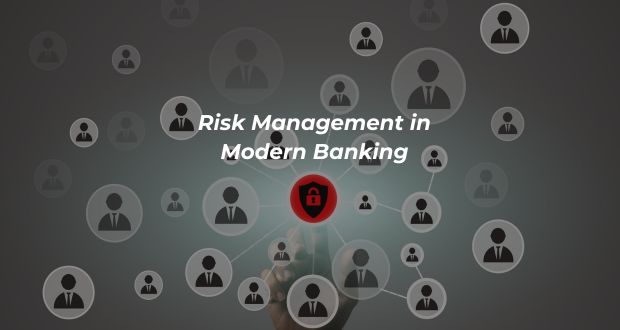Understanding Credit Risk
Definition and Significance of Credit Risk in Banking
Credit risk refers to the potential that a borrower will fail to meet their obligations in accordance with agreed terms. In the banking sector, managing credit risk is crucial as it directly impacts the financial health and stability of the institution. Effective credit risk management ensures that banks can maintain a healthy balance between risk and return, safeguarding their assets and reputation.
Strategies for Assessing and Mitigating Credit Risk
Banks employ various strategies to assess and mitigate credit risk, including:
- Credit Scoring Models: Utilizing statistical models to evaluate the creditworthiness of borrowers.
- Risk-Based Pricing: Adjusting interest rates based on the assessed risk level of the borrower.
- Diversification: Spreading credit exposure across various sectors and geographies to minimize risk concentration.
- Collateral Requirements: Securing loans with collateral to reduce potential losses in case of default.
Continuous Enhancement in Managing Credit Risk Effectively
Continuous enhancement is vital in managing credit risk effectively. This involves regularly updating risk assessment models, incorporating new data sources, and leveraging advanced technologies such as machine learning and AI. By continuously improving their credit risk management practices, banks can better anticipate and respond to emerging risks, ensuring long-term stability and success.
Fraud Risk Assessment and Management
Importance of Fraud Risk Assessment in Modern Banking
Fraud risk assessment is a critical component of risk management in modern banking. With the increasing sophistication of fraudulent activities, banks must continuously evaluate their exposure to fraud risks. Effective fraud risk assessment helps identify potential vulnerabilities, enabling banks to implement measures to protect their assets and maintain customer trust.
Key Components of a Robust Fraud Risk Management Strategy
A robust fraud risk management strategy typically includes:
- Risk Identification: Identifying potential fraud risks through comprehensive analysis and monitoring.
- Risk Assessment: Evaluating the likelihood and impact of identified fraud risks.
- Risk Mitigation: Implementing controls and measures to reduce the likelihood and impact of fraud.
- Monitoring and Reporting: Continuously monitoring fraud risks and reporting incidents to ensure timely response and mitigation.
Techniques for Fraud Prevention and Detection
Banks employ various techniques for fraud prevention and detection, including:
- Digital Footprinting: Analyzing digital footprints to detect unusual patterns and behaviors that may indicate fraudulent activities.
- Machine Learning Algorithms: Utilizing advanced algorithms to identify and predict fraudulent transactions.
- Behavioral Analytics: Monitoring customer behavior to detect anomalies that may suggest fraud.
- Multi-Factor Authentication: Implementing additional layers of security to verify the identity of users and prevent unauthorized access.
By integrating these techniques into their fraud risk management strategy, banks can enhance their ability to prevent and detect fraud, ensuring the security and integrity of their operations.
The Role of Technology in Risk Management
How Technology is Transforming Risk Management in Banking
Technology is revolutionizing risk management in the banking sector by providing advanced tools and methodologies to identify, assess, and mitigate risks more effectively. Innovations such as artificial intelligence (AI), machine learning, and big data analytics are enabling banks to process vast amounts of data in real-time, enhancing their ability to detect and respond to potential risks swiftly.
The Impact of Digital Footprinting on Fraud Detection and Prevention
Digital footprinting plays a crucial role in modern fraud detection and prevention strategies. By analyzing the digital trails left by users, banks can identify unusual patterns and behaviors that may indicate fraudulent activities. This proactive approach allows for early detection and intervention, significantly reducing the likelihood of fraud. Digital footprinting also helps in creating more accurate risk profiles, enabling banks to tailor their fraud prevention measures more effectively.
Technological Innovations in Risk Management
Several technological innovations are transforming risk management in banking, including:
- AI-Powered Risk Assessment Tools: These tools use machine learning algorithms to analyze historical data and predict potential risks, allowing banks to take preemptive actions.
- Blockchain Technology: Enhances transparency and security in transactions, reducing the risk of fraud and ensuring data integrity.
- Robotic Process Automation (RPA): Automates repetitive tasks, reducing human error and increasing efficiency in risk management processes.
- Advanced Analytics Platforms: Provide deep insights into risk patterns and trends, enabling banks to make data-driven decisions and improve their risk management strategies.
By leveraging these technological advancements, banks can enhance their risk management capabilities, ensuring greater security and stability in their operations.
TrustDecision’s AI-Based Fraud Management Strategy
TrustDecision offers a comprehensive fraud management solution that leverages AI to detect and prevent fraudulent activities in real-time. This solution integrates advanced analytics and machine learning to continuously enhance fraud detection capabilities. By providing a holistic approach to fraud risk management, TrustDecision ensures the security and integrity of banking operations.
Real-Time Fraud Detection: Utilizes AI to identify and mitigate fraudulent activities as they occur, ensuring immediate response to potential threats.
Advanced Analytics: Employs machine learning algorithms to analyze vast amounts of data, providing accurate and timely fraud risk assessments.
Continuous Enhancement: Regularly updates and improves fraud detection models to adapt to emerging threats, maintaining the effectiveness of the fraud management strategy.
TrustDecision’s AI-based approach not only enhances the accuracy and efficiency of fraud detection but also ensures that banks can stay ahead of evolving fraud tactics, safeguarding their operations and customer trust.
Benefits of Effective Risk Management
Effective risk management is crucial for the stability and success of banking institutions. By systematically identifying, assessing, and mitigating various risks, banks can protect their financial health and ensure operational continuity. This not only reduces the likelihood of significant financial losses due to credit defaults or fraud but also ensures regulatory compliance, thereby avoiding penalties and maintaining a good standing with regulatory bodies. Moreover, robust risk management enhances customer trust by safeguarding their assets and personal information, which is essential for maintaining a loyal customer base. Additionally, it streamlines processes and reduces the impact of disruptions, leading to more efficient and reliable banking operations.
Adopting a proactive approach to risk management is essential for modern banking institutions. This involves anticipating potential risks and implementing measures to address them before they materialize. Early detection and mitigation of risks allow for timely intervention, significantly reducing their potential impact. A proactive stance also ensures that banks remain adaptable, staying ahead of emerging threats and continuously updating their strategies to address new challenges. By focusing on high-risk areas, banks can optimize their resources more effectively. Furthermore, a proactive approach provides a solid foundation for strategic decision-making, enabling banks to pursue growth opportunities with confidence, knowing that they have robust risk management practices in place.
Conclusion
In the ever-evolving landscape of modern banking, the importance of risk management cannot be overstated. Effective risk management practices are essential for maintaining financial stability, ensuring regulatory compliance, and safeguarding customer trust. By addressing critical areas such as credit risk and fraud risk assessment, banks can mitigate potential threats and enhance their operational resilience.
Looking ahead, the future of risk management in banking will increasingly rely on advanced technologies and proactive strategies. The integration of AI, machine learning, and digital footprinting will play a pivotal role in enhancing fraud detection and prevention capabilities. Furthermore, the concept of continuous enhancement will remain central to effective risk management, enabling banks to adapt to emerging threats and evolving market conditions.
As banks continue to navigate the complexities of the digital age, a robust and adaptive risk management framework will be indispensable. By prioritizing risk management and leveraging innovative solutions like TrustDecision's AI-Based Fraud Management Strategy, financial institutions can ensure their long-term success and stability in an increasingly uncertain world.














